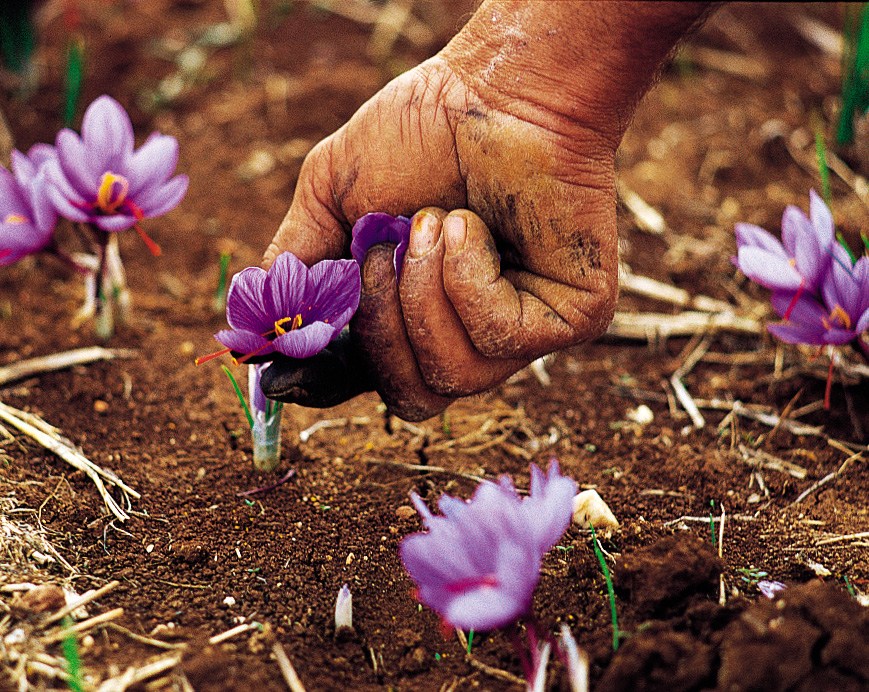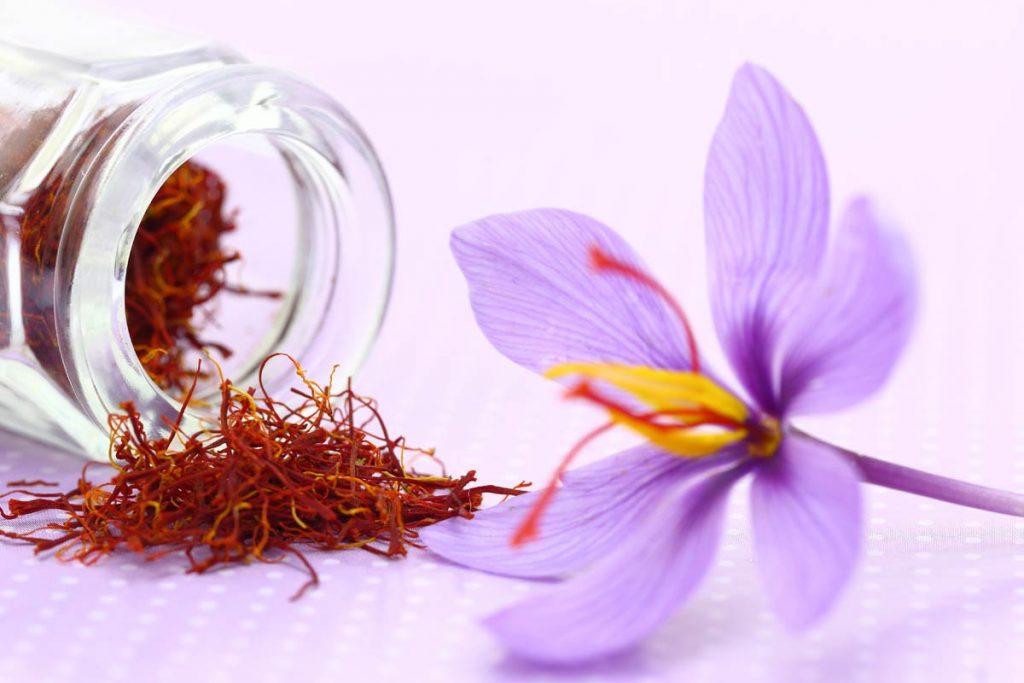
According to the myth, god Hermes had a friend whose name was “Crocus” and one day he injured him in his head. The blood went to a flower which was colored at three places. From here and then, called crocus. This flower, with the unique gifts, it is overtime used as a medicine, condiment and painting material.
The brand “Crocus” comes from the Greek word “Croci” which means thread. This word is known to us from the first manuscripts that appear in the whole world.
In the sense of plant, the word “Crocus” mentioned at Homer’s, Sophocles’, Aristophanes’ Hippocrates’ etc. scripts. It has cultivated in Greece at mid Minoan age. This opinion strengthened from a mural of the same age the “krokosillektis”(crocus collector). This mural shows a young person who is gathering crocus flowers in a basket. Lastly, Greeks are occupying with crocus planting from the Hellenistic period and at the age of great Alexander this flower was spread on the East.
Today, crocus is known as Crocus sativus or saffron and is one of the most infrequent pharmaceutical, eatable plants.
Even in ancient times, Hippocrates, the father of medicine and other modern doctors of his time, such as Dioscorides and Galen, refer to crocus as a therapeutic and medicinal plant thanks to two components, the picrocrocin and crocin.
It is considered analgesic, antipyretic, healing, anti-insomnia and good for the stomach. It contains vitamin B12, lycopine, zeaxanthin, a-b carotene, vitamin C, iron, potassium and magnesium.
A small amount of crocus is enough to add extra flavor and aroma to all the foods, coffee or other beverages.


The red Greek saffron, Crocus Sativus Cartwrightianus, is considered the king of spices. Its excellent quality is worldwide superior and is cultivated only in the area of Kozani since the 17th century AD. where the cultivation process, the climatic and soil conditions of the area, as well as the special knowledge for the cultivation of the plant, contribute to its excellent quality and its special characteristics. These are the high coloring power, intense, characteristic aroma and spicy flavor.
The processing is done by hand and is needed 150,000 flowers to produce 1 kilogram of dry fringe or 90.000 workers’ bends to collect these flowers. Its expensive price (considered the most expensive spice in the world) is offset by the minimum quantity that used each time.



